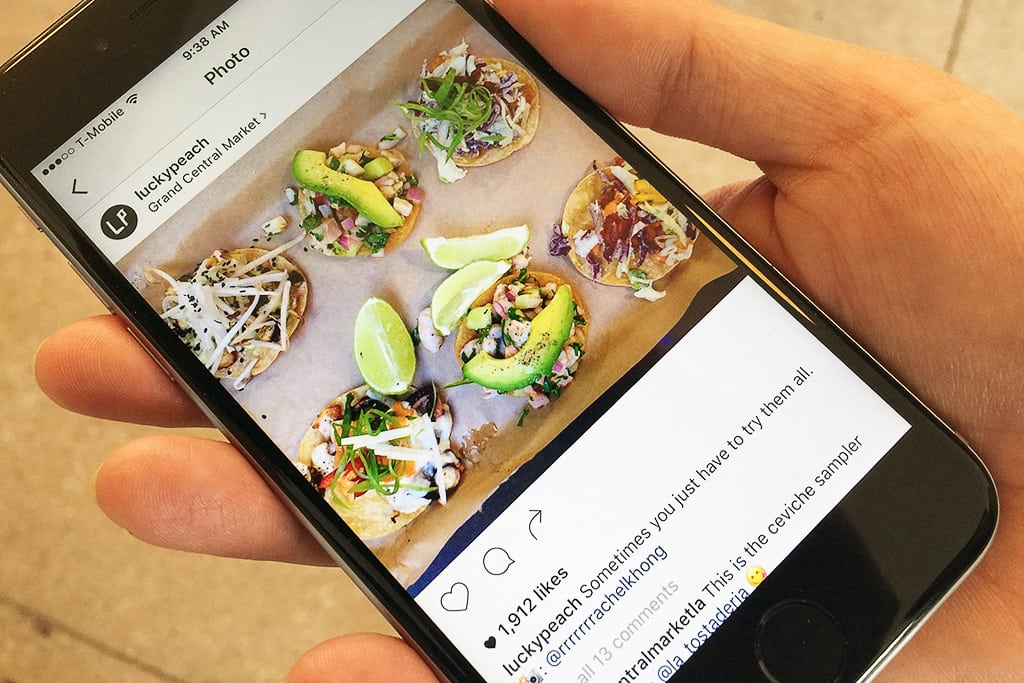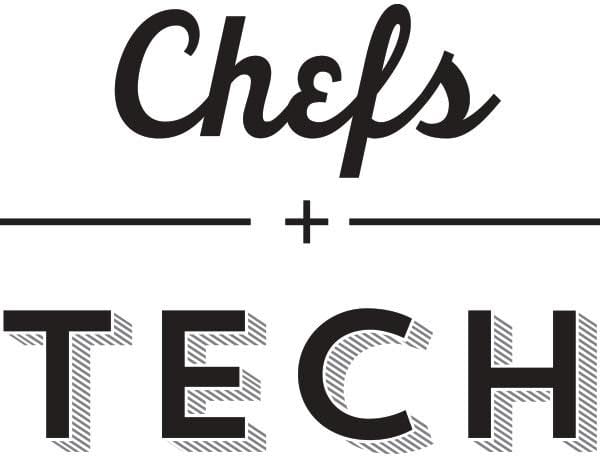Skift Take
We're fine with the Instagram trend, just so long as you don't ruin our meal with your picture taking.
Editor’s Note: Last week we announced that Skift was expanding into food and drink with the addition of the Chefs+Tech weekly newsletter.
We see this as a natural expansion of the Skift umbrella, bringing the big picture view on the future of dining out, being fanatically focused on the guest experience, and at the intersection of marketing and tech.
You can find the archives here, read the latest issue below, and subscribe here:
Subscribe to receive weekly updates
Photos
Instagram Influences Restaurant Design
Long-held thing I thought to be true that is now proclaimed by The Washingtonian to be true: restaurants are now designed with Instagram in mind. When designing a restaurant and menu, it makes sense to consider how customers will use the space. And in many cases, customers use the space to take photos, tag photos, upload photos, and share photos with a large network, essentially spreading your restaurant’s message (and vibe, and decor, and food) across the Internet. Examples given in the article include a showpiece hearth viewable from every table in the restaurant; mosaics, floor tiles, and artwork that makes a location instantly recognizable; a specialty (and quirky) host stand; and, of course, the food and drink itself.
This isn’t as eye-roll-inducing as the headline leads you to believe, though, because the result is a thoughtfully-designed, unique restaurant space that does a whole lot for branding and brand recognition. (Just, you know, turn the flash off first.)
Huh
When Listening to Eating Is Just Like Eating
Thing I knew nothing about until recently: ASMR, or Autonomous Sensory Meridian Response, a relaxing sensory experience that affects a select group of people and triggered by sound — sound like whispering, or… eating extra-crispy fried chicken, apparently. Food52 has a fascinating piece on the topic, including how some big food brands, like KFC and Dove Chocolate, are capitalizing on the …phenomenon? Experience? Subset of the population who experiences something that is hard to define? (Seriously can you tell this is a little bit mind-blowing?)
The purpose of brands creating videos, is, according to a KFC rep, because they attract a very different kind of customer. Ok, so advertising. This is also interesting because the sensory experience of eating isn’t something that can be replicated by any digital technology currently available — it’s a totally non-digital, non-technological, primal experience. But it seems that the effect of certain sounds is starting to come close to bridging that digital world / physical world gap, and that is fascinating. A study by neuroscientists measuring these videos’ efficacy is forthcoming, according to the piece.
Analog
How Tech Companies Disrupted Silicon Valley’s Restaurant Scene
This is chefs + tech in a more analog sense: as in, working chefs and tech companies, yet manages to parallel the digital industry too. Obviously, tech culture and the tech industry are pervasive in Silicon Valley, with the New York Times reporting that “70,000 square feet of Palo Alto retail and restaurant space were lost to office space from 2008 to 2015.” Large companies with large budgets hire the best restaurant laborers, like dishwashers and sous chefs, leaving virtually none for local restaurants. And smaller, often ethnic or family-run businesses suffer too, lost to “bento boxes ordered on iPads at a counter… and $500 meals at high-end restaurants.”
The Times article does a good job of breaking down the costs associated with restaurant operation; costs that explain why smaller restaurants can’t compete with the likes of their tech giant neighbors. It also shares some sad news about small, independent restaurants with service staff and the frozen yogurt stands and cupcake shops that have replaced them — presumably due to rising costs.
This doesn’t sound like a tech-solvable problem, either. But worth sharing because this indicates a pivotal moment in the restaurant-technology relationship. Obviously, free-market forces must be left to do their jobs in a healthy economy. That said, understanding and preserving restaurant and food culture should be a priority for any community, even in the fastest evolving, tech-savvy, cities of tomorrow — lest they become devoid of food culture.
Crowdfunding
The Sioux Chef Breaks Kickstarter Record
Using Kickstarter to fund a restaurant is a totally viable source of investment, as evidenced by amateur and near-celebrity chefs alike. This month, a new Kickstarter record by Minneapolis-based chef, Sean Sherman, a.k.a. The Sioux Chef. Sherman raised a total of close to $150,000 from 2,358 backers in 30 days: the most backers for any restaurant on Kickstarter, ever. His restaurant, called The Sioux Chef: An Indigenous Kitchen, will serve Native American cuisine, featuring native plants, local meat and fish, and no dairy, sugar, or wheat.
[Worth noting: the timing here aligns well with a Native American tourism push, as reported by Skift.]
Apps
Meet MealPal, the Robot Who Helps You Find Lunch
MealPal, formerly MealPass, is a New York-based lunch subscription service, now available in six cities (New York, San Francisco, Boston, Miami, and now Washington, D.C. and Chicago.) Founded by Mary Biggins, who also founded the successful ClassPass, the service has added a new feature to its app and website that aims to help you decide what to have for lunch. It lists 100 different ingredients that you, the user, can swipe to love or hate — effectively helping to decide what you should eat for lunch. This sort of feature is more novel than anything (remember the shake-to-find-a-restaurant app UrbanSpoon that came out with early iPhones? Man, that was exciting), but still a creative option for indecisive eaters.
In Short:
Food & Wine and Fortune magazine partnered to create a powerful list of the 20 most innovative women in food and drink. The list debuted last week, so if you haven’t had a chance to read through it, now’s the opportunity. It spotlights women working for fantastic causes, from the obviously tech-related Spoon University to the less tech-related, San Francisco-based Cala helmed by chef Gabriela Camara, who hired ex-convicts as 70 percent of her workforce. Worth a read — and your support!
Digestifs
- Ferran Adria on his new exhibit at the Dali Museum, and why chefs shouldn’t be rock stars — Bloomberg
- To read: 10 Restaurants That Changed America, out today. (With some love in the New York Times)
- Conde Nast Traveler’s list of the best 207 restaurants in the world — Conde Nast Traveler
Subscribe to receive weekly updates
The Daily Newsletter
Our daily coverage of the global travel industry. Written by editors and analysts from across Skift’s brands.
Have a confidential tip for Skift? Get in touch
Tags: food and drink, skift table

